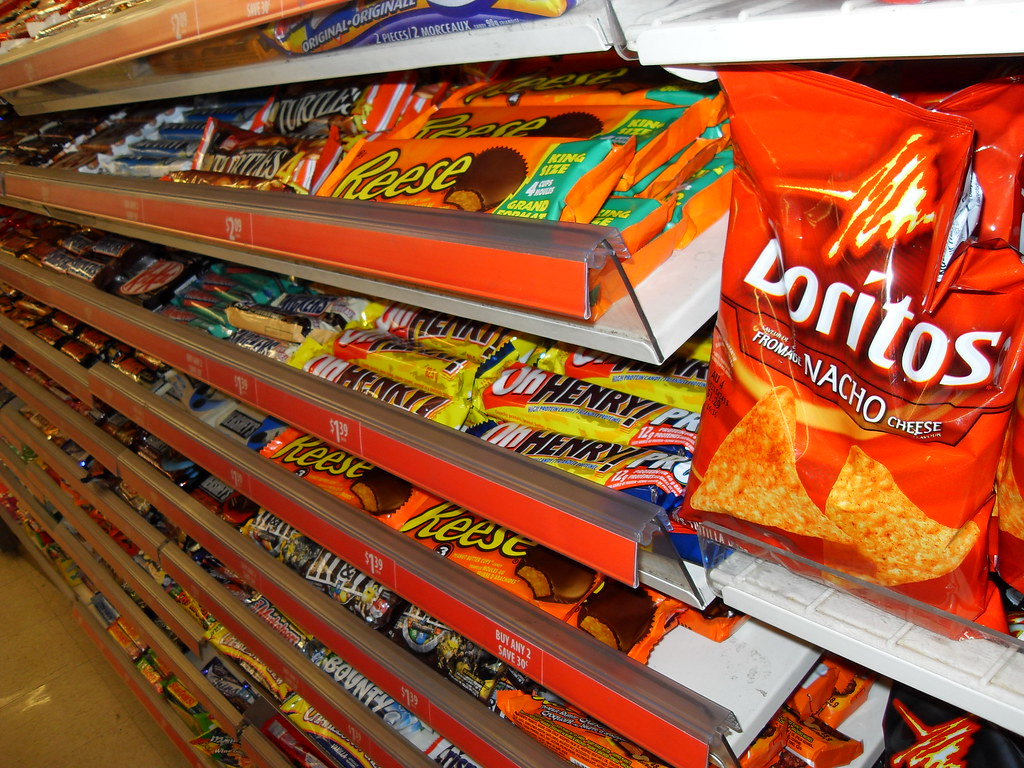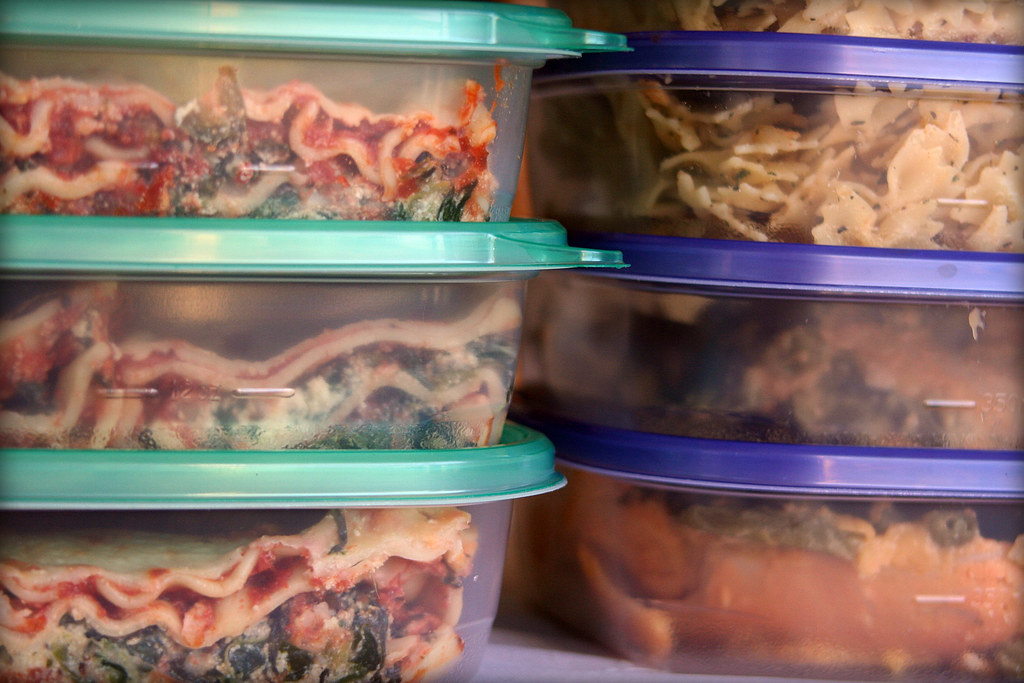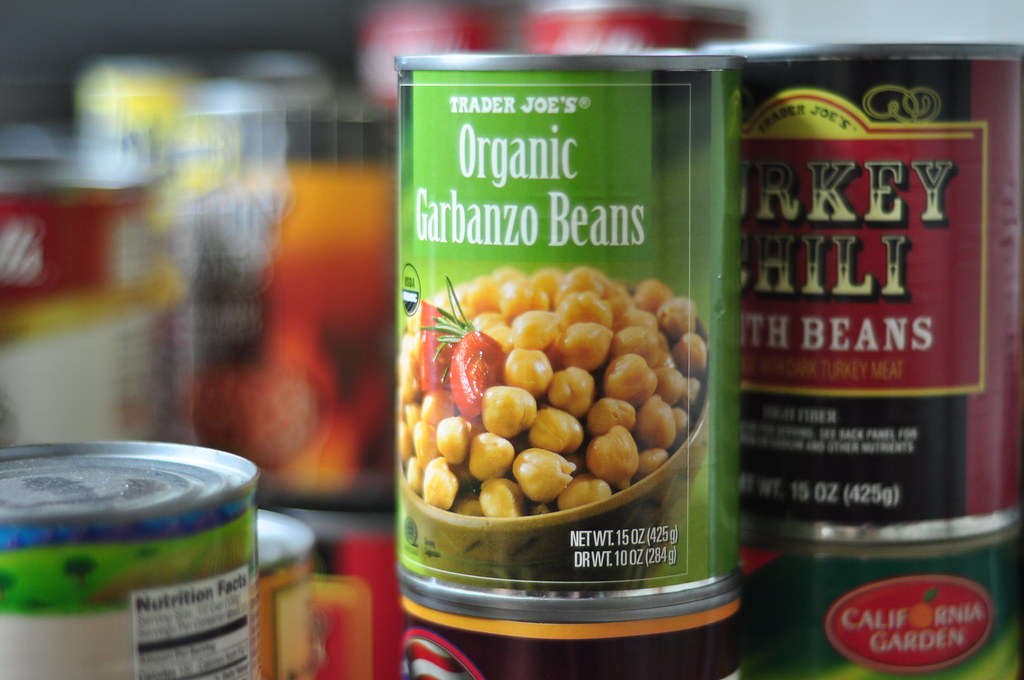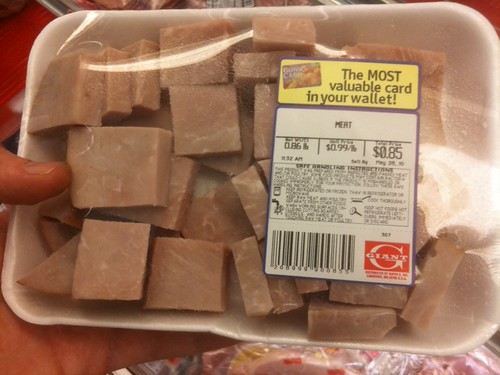
Grocery shopping has become one of the biggest budget stressors for households across the nation. It feels like every trip to the store ends with a higher total at checkout, even when you’re buying the same basics as before. With food costs continually on the rise, it’s no wonder many of us feel that sinking feeling at the supermarket as we watch the clerk ring up our purchases, often blowing past our weekly food budget before the conveyor belt is even empty. The USDA estimates that the average family of four (two adults and two children not including teenagers) spends between $200 and $246 per week on groceries, adding up to nearly $1000 per month just for food, and that doesn’t even factor in dining out.
But what if we told you it’s entirely possible to spend up to 50% less on groceries? You don’t need to dive into extreme couponing or intricate, time-consuming strategies to make a significant dent in your food bill. While fantastic ideas exist, like those from “the Krazy Coupon Lady,” not everyone has the time or organizational skills to become a super user of coupons. The good news is that with a few simple, actionable changes, you can genuinely stretch your dollars further, keep more money in your pocket, and still enjoy healthy, satisfying meals at home.
This guide is designed to empower you with concrete, practical tips that you can immediately apply to reduce your grocery expenses. We’ve compiled 14 straightforward hacks that will transform the way you shop and eat. From smarter planning before you even leave the house to making the most of in-store deals and leveraging technology, these strategies are geared to add up to real, tangible savings week after week. Get ready to take control of your grocery budget and start seeing a noticeable difference in your spending habits, starting today!

1. **Set a Budget and Stick to a List**This might seem like a fundamental truth, almost a no-brainer, but its importance cannot be overstated: establishing a clear budget is the cornerstone of effective grocery savings. If you have a set dollar figure in mind, you’ll naturally force yourself to make decisions rooted in needs versus wants, ensuring you adhere to your spending limit. The USDA even provides guidelines for food costs, which can be an excellent starting point for determining how much you realistically want to spend each week or month.
Beyond just setting a budget, the real magic happens when you meticulously track your spending over time. By keeping tabs on what you’re purchasing and for how much over the course of a month, you’ll swiftly uncover your personal spending pitfalls. Perhaps it’s that daily bottle of soda, those gourmet coffee beans, or the enticingly packaged snacks that consistently blow your budget. This kind of self-awareness transforms those tough food decisions into much easier choices when you visually see how small, seemingly insignificant purchases accumulate over a month or even a year.
Once your budget is established, the next crucial step is creating a detailed shopping list and, critically, sticking to it. Heading to the store without a plan is an open invitation for impulse buys, which are, as the saying goes, “the enemy of your wallet.” Those extra items you grab on the way to checkout are like small leaks that can sink your financial ship. Robin H. on the Clark Howard Facebook page eloquently explains, “I load my list electronically based on what I’m out of or I know we need. I scan everything before I put it into my cart and know my total before I get to checkout. If it’s creeping up, I start putting things back, but I mostly stick to my list.” This disciplined approach ensures you only purchase what’s truly needed, avoiding costly deviations and keeping your grocery bill firmly in check.
Read more about: Drove it Regretted it: 12 Compact Models That Made Owners Question Their Judgment on the First Commute.

2. **Master Unit Pricing & Sales Cycles**To truly save money, you need to become an expert at understanding value, and that starts with mastering unit pricing. Unit pricing refers to the small numbers on the shelf tag that tell you the cost per ounce, per count, or per pound of a product. This tiny detail is your secret weapon, especially for prepackaged snacks, bulk items, or when comparing different sizes of the same product, which can often be confusing to assess at a glance. It helps you get the best deal, ensuring you’re not tricked into spending more money for an identical or even less cost-effective product.
Consider a common supermarket scenario: you’re buying store-brand napkins and face the choice between a 250-count package and a 500-count package. Most people might instinctively assume the larger package offers better value because it’s a bulk purchase. However, as the context illustrates, this isn’t always true. The 500-count package might have a unit price of 70 cents per napkin, while the 250-count package could be 67 cents. In this specific example, the smaller package is actually the better value for your dollar. This phenomenon happens frequently, particularly in the paper aisle and with condiments, proving that the larger package isn’t always the cheaper option on a per-unit basis.
Beyond unit pricing, a savvy shopper also learns to recognize sales cycles and identify true deals. “Know what prices typically are and know when to spot deals and when to stock up,” advises Facebook poster Kathy W. This involves familiarizing yourself with the regular prices of your 10 most frequently purchased items. Grocery store sales tend to be cyclical, meaning the same items often go on sale roughly every 4, 6, or 12 weeks. If you understand how often your favorite cereal or peanut butter goes on sale, you can stock up with enough to last until the next promotion, completely avoiding the need to pay full price in between. This proactive approach to tracking sales transforms you from a reactive shopper into a strategic one, always catching items at their lowest prices.
Read more about: 13 Expert Secrets to Negotiate the Lowest Price on Your Next Car Lease Agreement

3. **Embrace Store Brands and Generics**One of the simplest yet most impactful ways to reduce your grocery bill without sacrificing quality is to embrace store brands and generic products. These less expensive alternatives to name brand items are often overlooked, but they represent a significant opportunity for savings. For many products, the difference in taste is minimal, if noticeable at all, especially when used as an ingredient in a recipe. Your casseroles, spaghetti sauces, and other dishes will taste just as good if you give generic ingredients a chance, proving that name recognition doesn’t always equate to superior flavor or performance.
In many instances, the perceived difference between a name brand and a generic product is entirely artificial. It’s a well-known industry secret that sometimes, the name brand and the store brand product are actually the exact same food, manufactured and packaged in the same facility, just with different labels. As the context points out, “Read about 10 products whose name brand is the same product as the generic, here. Don’t get tricked into spending more money for an identical product.” This insight reveals that a considerable portion of the extra cost associated with name brands is simply for marketing and branding, not for a fundamentally different or better product.
The strategy here is to experiment. If you’re hesitant, simply “Try a store brand just once the next time you’re at the supermarket,” as money expert Clark Howard suggests. If you enjoy what you buy, you’ll realize immediate savings and continue to save every time you repurchase that item. If, by chance, you don’t like it, most stores offer a refund or will even exchange the store brand for the national brand, so there’s really no risk involved. Making this simple switch can typically save you up to 30% on those specific items without the need for coupon clipping or complex strategies, making it one of the easiest ways to significantly lower your grocery expenses.
4. **Strategic Meat Shopping**Meat is consistently one of the most expensive categories on any grocery bill, making it a prime target for strategic savings. One incredibly effective tactic is to seek out meat sold on its “sell by” date. Stores are under pressure to move these items quickly to avoid throwing them away, so they are frequently heavily discounted. “Peruse the coolers until you find some of those sale stickers,” the context advises. However, planning ahead is key here; you’ll likely need to process these foods immediately upon purchase, whether by cooking them, dividing them into smaller portions, or freezing them, to prevent spoilage and ensure your good deal doesn’t turn into wasted food and money.
Another smart approach is to be flexible with the cuts of meat you purchase. While boneless, skinless chicken breasts offer convenience, they also come with a higher price tag. Don’t shy away from less conventional or cheaper cuts like thigh quarters, which can be significantly less per pound. The context notes, “Thigh quarters are usually around $1.88 per pound in my local store, where boneless skinless chicken breasts are easily double that.” The flavor and nutritional value are often just as good, if not better, in these alternative cuts. Similarly, consider substituting ground turkey for ground beef; it’s a delicious and often more economical alternative that can be used in many of the same recipes without sacrificing taste.
Furthermore, integrating meatless meals into your weekly menu can profoundly impact your grocery budget. While protein is essential, having a few plant-based dinners each week can significantly cut down on expenses. Simple and cheap options include spaghetti without meat, hearty soups, fresh salads, or even creative sandwiches for supper. These meals not only reduce your spending on expensive meat products but can also introduce variety and expand your culinary repertoire. It’s a simple, impactful shift that allows you to enjoy delicious meals while keeping your grocery bill firmly under control.
Read more about: Jamie Oliver: A Culinary Odyssey – The Enduring Influence of a Global Food Visionary, From Humble Pub Kitchens to International Acclaim

5. **Grow Your Own Greens**When it comes to produce, greens like lettuces, arugula, spinach, and kale are notoriously expensive per pound and, frustratingly, have a very short shelf life. Many of us have experienced the disappointment of losing fresh greens because we couldn’t consume them fast enough before they went bad. This common scenario highlights a fantastic opportunity for savings and a fresh supply: growing your own. Greens are some of the easiest and quickest vegetables to cultivate, making them an ideal starting point for anyone looking to add homegrown produce to their diet.
If you were to grow only one thing in your garden, making it greens would be a highly strategic choice. Doing so not only saves a considerable amount of money but also adds significant nutritional value to your food, ensuring you always have fresh, crisp ingredients on hand. The beauty of growing greens is that you don’t necessarily need a sprawling garden plot. For those with limited space, lettuce can be easily grown in a container on a balcony, or you can even cultivate a few sprouts right on your kitchen counter. This method is incredibly inexpensive to start and remarkably easy to maintain, making fresh produce accessible to nearly everyone.
Beyond the immediate financial benefits, growing your own greens provides an unparalleled level of freshness and convenience. Imagine needing a handful of spinach or a few lettuce leaves for a salad and simply stepping outside or reaching into your kitchen to snip exactly what you need. This eliminates waste from spoiled store-bought greens and ensures that what you’re eating is at its peak of flavor and nutritional content. It’s a simple, empowering hack that connects you more directly with your food source while significantly trimming a persistent and often costly line item from your weekly grocery expenses.
Read more about: From Underdog to Icon: 12 Small Snack Brands That Absolutely Crushed It Globally

6. **Leverage Pharmacy & Drugstore Deals**While grocery stores are the obvious destination for food, savvy shoppers know to cast a wider net and explore unexpected retailers for deals, particularly pharmacies and drugstores like CVS. These establishments often have their own small grocery sections, and while many convenience items might be pricier than at a supermarket, they also run fantastic deals on certain foods from time to time. The trick is to wait for these sales and capitalize on them, rather than buying at full price.
Drugstores are especially known for their aggressive sales and promotions, which can extend to grocery and non-grocery items alike. You might find significant discounts on staples like cereal or dairy, often $1 to a few bucks off what you’d pay at a traditional grocery store. The key is vigilance: “Most stores offer an email newsletter that will alert you to sales that week, and you probably already receive the mailers that highlight various promotions – so look through them before you toss them in the trash.” Combining these sales with store loyalty programs, such as CVS ExtraCare bucks, can lead to even deeper discounts, sometimes making items incredibly cheap or even free.
Beyond just food, drugstores frequently offer sales on personal care items, cleaning supplies, and other household necessities that you might typically buy at a grocery store. Items like toothpaste, toothbrushes, makeup, and store-brand garbage bags or diapers are often heavily discounted. By integrating drugstores into your shopping routine and timing your purchases with their sales, you can offload these non-grocery essentials from your main supermarket trip, thereby reducing your overall grocery bill and maximizing your savings across various categories. It’s a smart way to think “outside the box” when it comes to where you source your household goods.” , “_words_section1”: “1994
Having established the foundational strategies for smart grocery shopping and in-store savings, it’s time to elevate your game. This next set of hacks delves into more advanced tactics, focusing on minimizing waste, harnessing modern technology, and even outsmarting retailer psychology to ensure every dollar you spend on groceries works harder for you. These strategies move beyond basic planning, guiding you towards a more holistic and efficient approach to managing your food budget.

7. **Bulk Buying with Purpose**Buying in bulk often presents a tempting opportunity to save, and for good reason: products like rice, oatmeal, and flour are frequently cheaper per unit when purchased in larger quantities. Even meat can be more economical per pound when bought in bulk, offering substantial savings over time. The key, however, lies in discernment, ensuring that your bulk purchases genuinely lead to savings and not to wasted food.
Certain items are perfect candidates for bulk buying due to their long shelf life. The context notes that products such as honey, dried beans, maple syrup, and rice are so shelf-stable that they practically never expire. These are “no-brainers” to acquire in bulk, especially when they are on sale, allowing you to stock up and use them as needed without worrying about spoilage.
When considering bulk purchases, it’s crucial to evaluate whether you will realistically use the entire quantity before it goes bad. Promotions like “10 for $10” can be enticing, but they are not always a bargain if a significant portion ends up in the trash. The context advises that bulk buying “only makes sense for shelf-stable items you eat regularly, such as pasta, canned goods, or products you can freeze.” Otherwise, both your food and your hard-earned money could end up wasted. Warehouse clubs, like Costco, Sam’s Club, or BJ’s, are excellent venues for these types of purchases, offering significant value if you have the storage space and consume the items regularly.
Read more about: Instant Disappointment: 10 Sports Cars That Failed to Live Up to the Hype Off the Assembly Line.

8. **Optimize Food Storage**The effort you put into finding deals and saving money at the checkout can quickly be undone if your food isn’t stored correctly. Improper storage leads to spoilage, effectively negating all your careful budgeting and smart shopping. The goal is not just to buy food cheaply, but to ensure it remains edible and nutritious until it’s consumed, preventing costly waste.
Creating proper food storage solutions is a crucial step towards long-term savings. A deep freezer in your garage or basement, for instance, is “invaluable for stocking up on meat and breads” that you’ve purchased on sale or in bulk. Similarly, establishing extra pantry shelves in a cool, dry spare closet ensures dried goods like pasta, rice, and canned items are kept in optimal conditions. This foresight prevents food from molding quickly, which can happen if stored in humid environments like some basements, as the context warns.
Beyond just preventing spoilage, effective food storage also offers the invaluable benefit of preparedness. Stocking up wisely means “you won’t ever have to make an emergency trip to the store to prepare for bad weather.” Having food readily on hand for emergencies not only saves money by avoiding last-minute, full-price purchases but also ensures peace of mind. By extending the life of your groceries, you significantly reduce the nearly 40% of food that, according to marketwatch.com, gets thrown away in the United States, keeping more money in your budget and less waste in landfills.
Read more about: Beyond the Road: Unpacking the Complex Journey of EV Battery Recycling and Its Future

9. **Cook from Your Pantry First**Before you even think about setting foot in a grocery store, embark on a treasure hunt right in your own kitchen: dig through your pantry, fridge, and freezer. You might be genuinely surprised by the “treasures lurking” on your shelves – forgotten cans, pasta boxes, or frozen vegetables that can form the basis of delicious meals. This simple act of discovery is a powerful first step in reducing your grocery bill.
With a little creativity, you can craft entire meals “right from your pantry without having to purchase a lot of ingredients.” This approach not only challenges your culinary skills but also ensures that you’re actively “using up food before it goes bad,” which directly translates into significant savings on wasted food. The context encourages you to “look for pastas, cans of soup, or any other items that got pushed to the back or bottom of your pantry.”
If you find yourself staring at an assortment of ingredients, unsure how to combine them, technology can come to your rescue. Resourceful meal planning sites, such as SuperCook.com, allow you to enter the ingredients you already have on hand and then suggest meal ideas. This innovative hack helps transform existing stock into satisfying dinners, maximizing the value of every item you’ve purchased and minimizing the need for additional grocery runs.
Read more about: Slash Your Grocery Bills in 2025: 14 Smart Ways to Eat Well for Less

10. **Shop Around & Compare Stores**Assuming all grocery stores offer the same prices is a common misconception that can cost you dearly. The reality is that “not every store offers the same deals,” making it essential to expand your shopping horizons beyond your usual go-to supermarket. By strategically comparing prices across different retailers, you can significantly reduce your overall grocery expenditure.
My own experience, shared in the context, highlights this perfectly: “my local grocery store has great deals on certain things like meat and produce, and some of their store brand prices are fantastic. But their prices on prepackaged snacks are nowhere near as good as the larger chain stores, such as Giant.” This illustrates that different stores excel in different categories. For specialized foods like goat cheese or raw milk, visiting a local Mennonite store can provide “amazingly fresh dairy items at a great price,” proving that the best deals often lie beyond the mainstream supermarket.
The initial effort of scouting out various stores – including warehouse clubs like Costco, Sam’s Club, or BJ’s, discounters like Aldi and Lidl, or dollar stores such as Dollar Tree and Dollar General – might seem daunting. However, you don’t need to visit multiple stores every week. The strategy is to “alternate trips and stock up so I’m not going to multiple stores in one week.” A quick check of “weekly ads, store websites, or apps” before you head out can pinpoint where you’ll find the lowest prices on the items you need, making a noticeable difference in your total bill. This flexible approach to where and how you shop can yield substantial, ongoing savings.
Read more about: Unleash Your Inner Mechanic: 15 Essential DIY Car Hacks to Save a Fortune on Maintenance

11. **Avoid Impulse Buys (and Other Psychological Traps)**Grocery stores are masterfully designed environments, crafted to encourage you to buy more than you planned. To truly master your grocery budget, you need to become aware of and actively counter these subtle psychological traps. Impulse buys, as the saying goes, “are the enemy of your wallet,” and they can quickly inflate your bill, transforming a planned shopping trip into an expensive detour.
One key defense against these traps is to control your mindset and environment. “Never grocery shop on an empty stomach,” advises Facebook poster Ann D., because “shopping on an empty stomach makes you more likely to grab things you don’t need.” Similarly, “avoid shopping when tired, hungry, or emotional,” as you’re “less likely to just throw things in the cart to get it over with.” The goal is to shop when you are “full, happy, and well-rested,” allowing you to remain focused and stick diligently to your list.
Retailers also strategically place items to maximize sales. “Don’t buy things at eye level,” suggests Jordan Page of funcheaporfree.com, because “they are the most expensive.” Instead, a savvy shopper should “look towards the bottom of the rack for a less expensive version of the same thing.” This “sneaky product placement” also includes tempting, pre-cut convenience foods like sliced apples or watermelon. While appealing, “you’re also paying for the packaging,” so “do it yourself and save a lot of cash” by buying whole items. Ultimately, the less you shop, the fewer opportunities there are for these unintended purchases, making “shop less often” another simple yet powerful hack to keep your budget on track and your wallet happy.
Embarking on this journey to slash your grocery bill by 30% or more might seem like a significant undertaking, but as we’ve explored, it’s entirely achievable with a strategic approach. By integrating these actionable hacks—from meticulous planning and embracing generics to leveraging technology and outsmarting marketing tactics—you’re not just saving money; you’re gaining control, reducing waste, and empowering yourself with a more efficient and sustainable way to feed your household. Remember, every small change adds up, transforming your shopping habits into a powerful financial tool. So, go forth, apply these insights, and watch your grocery budget transform, leaving more cash in your pocket for the things that truly matter. It’s not about deprivation; it’s about smart choices and empowered living.



